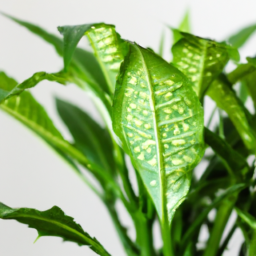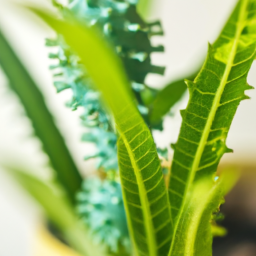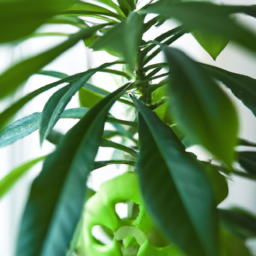
Are indoor plants toxic? This is a common question that many plant owners may have, especially those with pets or young children in the home. While indoor plants can bring beauty and a sense of nature into our living spaces, it’s important to be aware of the potential risks they may pose. In this blog post, we will explore the topic of whether indoor plants can be toxic and what precautions you can take to ensure the safety of your loved ones. Let’s dive in and learn more about the potential dangers of indoor plants.
The Benefits of Non-Toxic Indoor Plants
Introduction
Indoor plants are a great way to bring some greenery into your home and improve the air quality. However, many people are concerned about the potential toxicity of indoor plants. In this article, we will explore the benefits of non-toxic indoor plants and how they can enhance your living space.
Improving Air Quality
One of the main benefits of non-toxic indoor plants is their ability to improve air quality. Plants absorb carbon dioxide and release oxygen through the process of photosynthesis, which can help to freshen up the air in your home. Additionally, some plants have the ability to remove toxins from the air, such as formaldehyde and benzene, which are commonly found in indoor environments. By incorporating non-toxic indoor plants into your home, you can create a healthier living environment for you and your family.
In addition to improving air quality, non-toxic indoor plants can also help to regulate humidity levels in your home. Plants release water vapor through a process called transpiration, which can help to increase humidity in dry indoor environments. This can be especially beneficial during the winter months when indoor heating can cause the air to become dry and uncomfortable. By adding non-toxic indoor plants to your living space, you can create a more comfortable and healthy environment for yourself and your loved ones.
Another benefit of non-toxic indoor plants is their ability to reduce stress and improve mental well-being. Studies have shown that being around plants can help to lower blood pressure, reduce anxiety, and improve overall mood. The presence of greenery in your home can create a sense of calm and tranquility, which can be especially beneficial in today’s fast-paced and stressful world. By incorporating non-toxic indoor plants into your living space, you can create a peaceful and relaxing environment where you can unwind and de-stress after a long day.
In conclusion, non-toxic indoor plants offer a wide range of benefits for both your physical and mental well-being. From improving air quality and regulating humidity levels to reducing stress and creating a sense of calm, these plants can enhance your living space in numerous ways. Consider adding some non-toxic indoor plants to your home today and experience the many benefits that they have to offer.

Common Toxic Indoor Plants to Avoid
Introduction
When it comes to choosing indoor plants for your home or office, it’s important to be aware of which plants can be toxic to humans and pets. While many indoor plants are safe and beneficial to have around, there are some common varieties that can be harmful if ingested or touched. In this guide, we’ll take a closer look at some of the most common toxic indoor plants to avoid, and how to keep your space safe and healthy.
Pothos
Pothos, also known as Devil’s Ivy, is a popular indoor plant due to its low maintenance and trailing vines. However, pothos contains calcium oxalate crystals, which can cause irritation and swelling if ingested or come into contact with the skin. Symptoms of pothos poisoning include nausea, vomiting, and difficulty swallowing. To keep your home safe, it’s best to place pothos out of reach of children and pets, and to wash your hands after handling the plant.
Another toxic indoor plant to be aware of is the Peace Lily. While this plant is known for its beautiful white flowers and air-purifying qualities, it contains calcium oxalate crystals like pothos. Ingesting or touching the leaves of a Peace Lily can cause symptoms such as mouth and throat irritation, drooling, and swelling. To prevent accidental poisoning, keep Peace Lilies in a location where they are not easily accessible to children and pets.
Dieffenbachia, also known as Dumb Cane, is another common indoor plant that can be toxic if ingested. This plant contains calcium oxalate crystals in its leaves and stems, which can cause intense burning and swelling of the mouth and throat. In severe cases, ingesting Dieffenbachia can lead to difficulty breathing and even death. It’s important to keep this plant out of reach of children and pets, and to seek medical attention if accidental ingestion occurs.
In conclusion, while indoor plants can bring beauty and health benefits to your space, it’s important to be aware of which plants can be toxic. By avoiding common toxic indoor plants like pothos, Peace Lilies, and Dieffenbachia, you can create a safe and healthy environment for you and your loved ones. Remember to always research plants before bringing them into your home, and to seek medical attention if accidental poisoning occurs.

Are Indoor Plants Toxic?
Indoor plants are a great way to bring nature into your home and improve air quality. However, some indoor plants can be toxic to pets and children if ingested. It’s important to be aware of which plants are safe to have around your loved ones. Here, we will discuss how to determine if indoor plants are toxic and provide tips for choosing safe plants.
Identifying Toxic Indoor Plants
There are thousands of indoor plants, and not all of them are toxic. Some common toxic indoor plants include lilies, philodendrons, and pothos. Signs of toxicity in pets and children can include vomiting, diarrhea, and skin irritation. It’s important to research the toxicity of indoor plants before bringing them into your home.
If you suspect that a plant may be toxic, it’s best to keep it out of reach of pets and children. You can also contact your local poison control center or veterinarian for more information on toxic plants.
When choosing indoor plants, look for non-toxic options such as spider plants, African violets, and Boston ferns. These plants are safe to have around pets and children and can still provide the benefits of indoor greenery.
Tips for Choosing Safe Indoor Plants
When selecting indoor plants, consider the habits of your pets and children. If you have a curious cat who likes to nibble on plants, avoid toxic options like lilies and philodendrons. Instead, opt for plants that are safe for feline friends, such as cat grass or spider plants.
For households with young children, it’s best to choose plants that are non-toxic and safe to touch. Plants with thorns or spines should be avoided to prevent injuries. Look for options like Boston ferns, Christmas cacti, and peace lilies that are safe for little hands to explore.
Another tip for choosing safe indoor plants is to consider the placement of the plants in your home. Hanging plants or tall shelves can keep plants out of reach of pets and children. Be sure to also avoid placing plants near heating vents or drafty windows, as extreme temperatures can be harmful to certain plant species.
Conclusion
In conclusion, it’s important to be mindful of the toxicity of indoor plants when choosing greenery for your home. By identifying toxic plants and selecting safe options, you can create a healthy and safe environment for your pets and children. Remember to research plant toxicity, consider the habits of your pets and children, and choose plant placement wisely to enjoy the benefits of indoor plants without the risk of toxicity.
Let’s bring it all home
Many people love having indoor plants in their homes for their aesthetic appeal and air-purifying benefits. However, there is a common concern about whether indoor plants can be toxic to humans and pets. The truth is that while some indoor plants can be toxic if ingested, most are safe to have around as long as precautions are taken.
It’s important to research the specific plants you have in your home to determine if they are toxic or not. Some common toxic indoor plants include lilies, philodendrons, and peace lilies. If you have pets or young children, it’s especially important to be aware of the potential dangers these plants can pose. Overall, as long as you are informed about the plants in your home and take precautions to keep them out of reach, you can enjoy the beauty and benefits of indoor plants without worry.
Here are the top questions that we were asked:
Q1: Are indoor plants toxic to pets?
A1: Some indoor plants can be toxic to pets if ingested. It’s important to research the specific plants you have in your home to ensure they are safe for your furry friends.
Q2: Can indoor plants be toxic to humans?
A2: Yes, some indoor plants can be toxic to humans if ingested. It’s important to place toxic plants out of reach of children and pets to prevent accidental ingestion.
Q3: How can I tell if my indoor plant is toxic?
A3: You can research the specific plant online or consult with a plant expert to determine if your indoor plant is toxic. Look out for common toxic plant symptoms such as skin irritation, nausea, or vomiting.
Q4: What should I do if my pet ingests a toxic indoor plant?
A4: If your pet ingests a toxic indoor plant, contact your veterinarian immediately. They will be able to provide guidance on how to proceed and may recommend treatment depending on the severity of the ingestion.
Q5: Are there non-toxic indoor plant options available?
A5: Yes, there are many non-toxic indoor plant options available that are safe for both pets and humans. Some popular non-toxic indoor plants include spider plants, Boston ferns, and African violets.
Dr. Olivia Green is a botanist with over two decades of experience in indoor plant cultivation. She holds a Ph.D. in Plant Biology and has dedicated her career to researching plant behavior in controlled environments. Dr. Green is passionate about helping plant enthusiasts master the art of indoor gardening through her extensive knowledge and practical insights.


